There are a few treatment options available for lipedema, including tumescent technique liposuction. Liposuction is a good option for patients to remove the troublesome fat that is causing the symptoms. Improving techniques in recent years in the field of cosmetic surgery allow patients a safer surgery that causes less trauma to the area and provides a faster recovery time.
Tumescent Technique
For ladies with lipedema who have symptoms that are not adequately controlled with non-surgical treatment, or those who have mobility issues, lymphatic sparing liposuction can benefit them greatly.
The tumescent technique is one of the most popular liposuction treatments, gaining in popularity thanks to the many benefits it provides. Tumescent liposuction, unlike traditional liposuction, uses localized anesthetic instead of general tumescent anesthesia, so patients remain conscious through the entire procedure. Localized anesthetic is much safer to use for patients, causing little to no complications when compared to general tumescent anesthesia. Cosmetic surgeons use a tumescent fluid to surround the fat being removed, using a cannula to dislodge it from the connective tissue, and then suctioning it away.
With lipedema, there is great concern of damage to the lymphatics. Dr. Wright has developed a technique to identify markers of the lymphatic system and take care to avoid injuring them during the tumescent liposuction procedure on patients with lipedema. The tumescent technique allows for relatively quick recovery times and is an outpatient procedure.
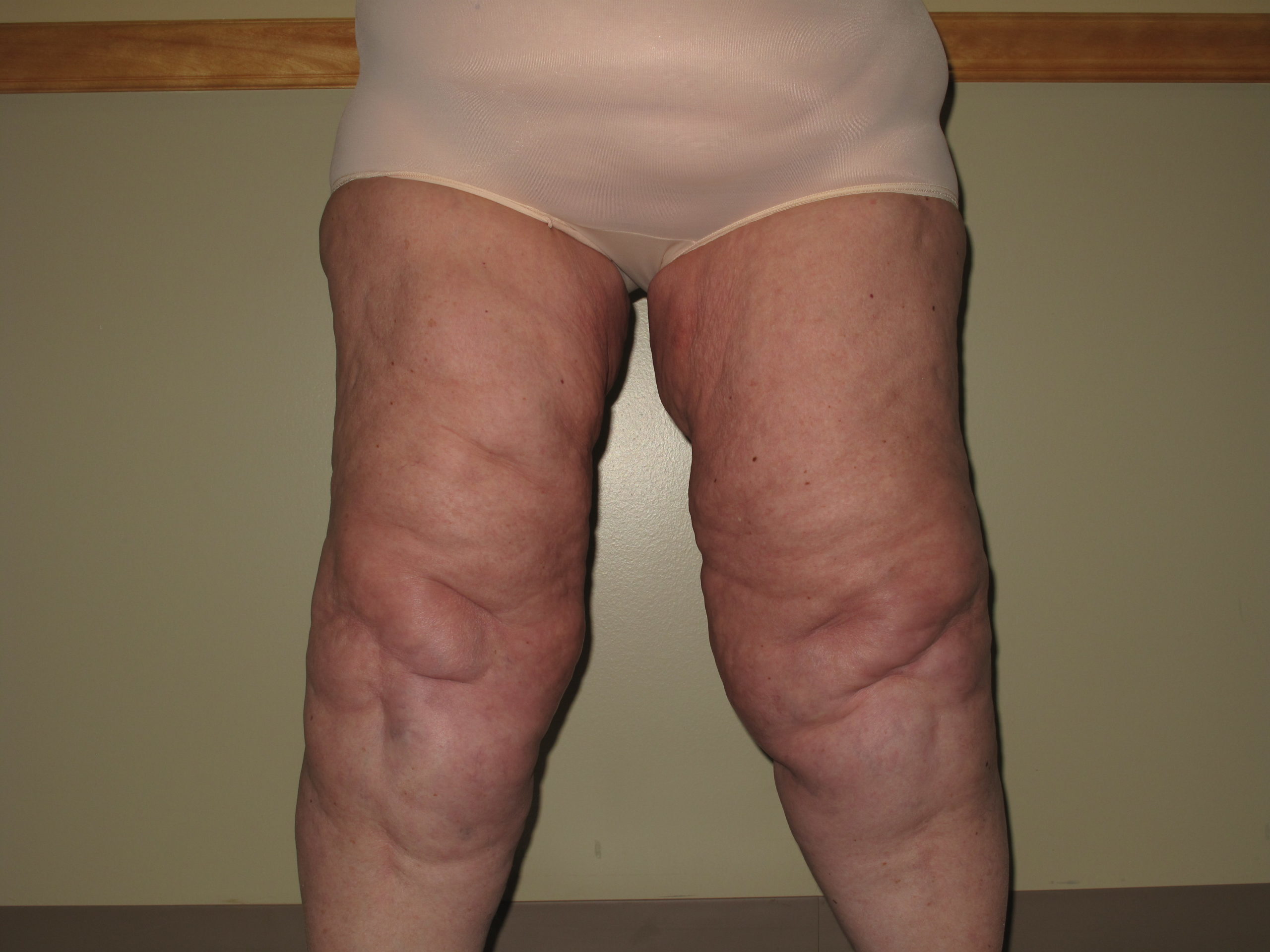

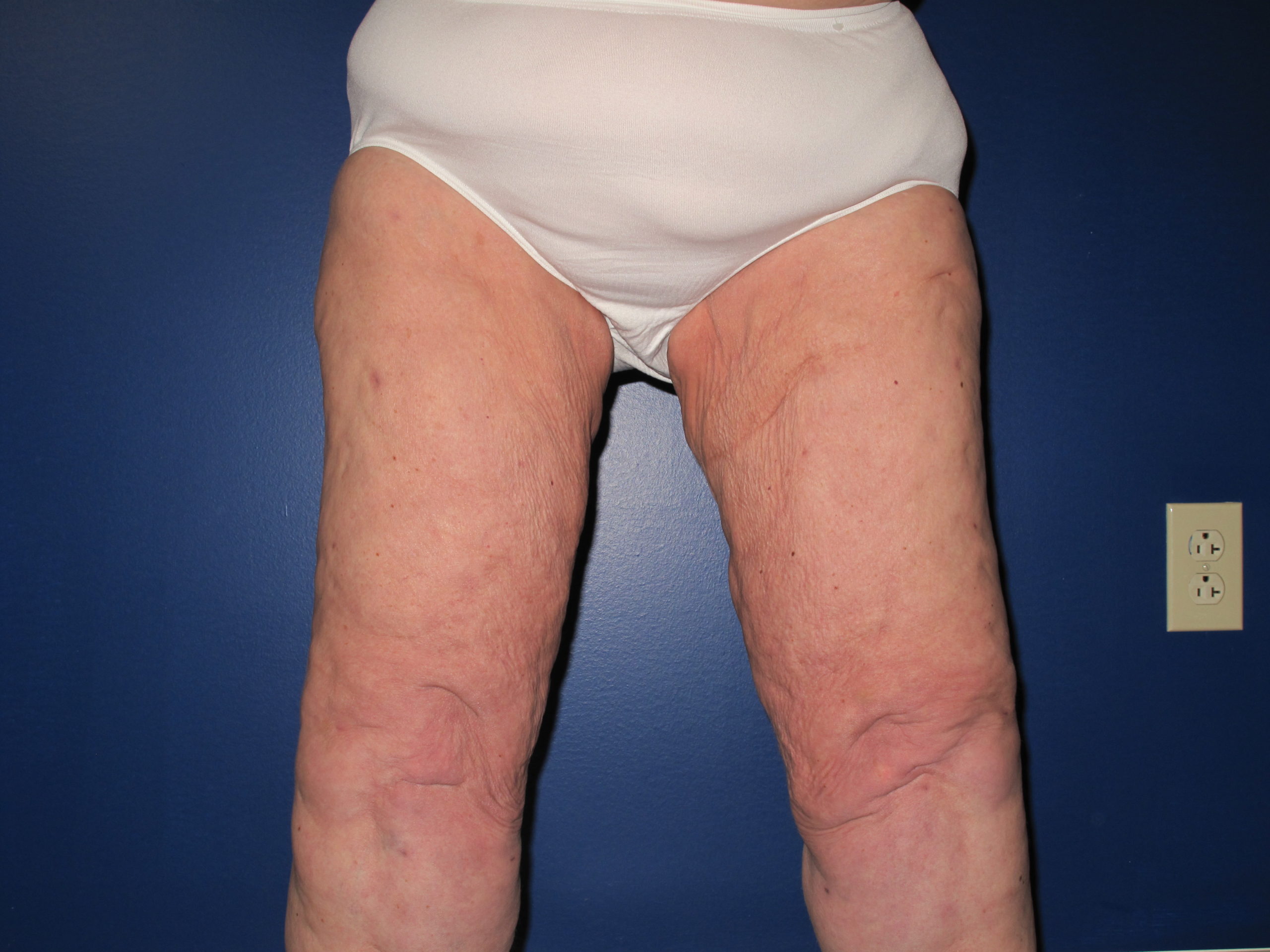

Individual results may vary
Thanks to the tumescent technique, many lipedema patients can experience lessening – and even reversal – of symptoms. Studies have shown that symptoms have long-lasting improvement post-surgery, including slowing the progression of lipedema. Tumescent liposuction permanently removes fat through a safe outpatient procedure. Some results are immediate, however, recovery time is a bit longer for patients with lipedema. Because the fat is gone, liposuction with special precautions to spare lymphatic damage can significantly improve mobility issues, especially around the inner thigh and knees.
Risks of Anesthesia
Local Anesthesia
A local anesthetic is by far the most common anesthesia used. Tens of thousands of medical and dental procedures are performed every day using local anesthetic safely and successfully in the United States. It is the safest form of surgical anesthesia and has a much lower risk overall than general anesthesia.
However, there are some limits to the amounts of local anesthesia that can be safely used during one procedure. The total dose of the local anesthetic, lidocaine for example, is not unlimited. While a large area of the body can be treated in one surgery without exceeding the total safe dose, the whole body cannot be treated safely using local anesthetic as the only anesthesia. If the safe dose is exceeded, serious side effects may occur, including seizures, arrhythmias, and even death could occur.
Water Assisted Lipo Technique
The water-assisted liposuction technique (WAL) is theoretically thought to be the most gentle of all liposuction options, due to its unique approach to fat removal. While WAL also uses tumescent fluid, it changes the way fat is dislodged from the surrounding tissue. Water liposuction uses a pressure spray of tumescent fluid to dislodge the fat from the connective tissue, rather than utilizing a cannula and suction.
Thanks to the water pressure dislodging the fat instead, WAL does not cause unnecessary trauma to the area, however, it still uses a suction cannula to remove the fat. This, combined with the use of local anesthesia instead of tumescent infiltration, allows water lipo to be very gentle on the body and have a short recovery time for patients.
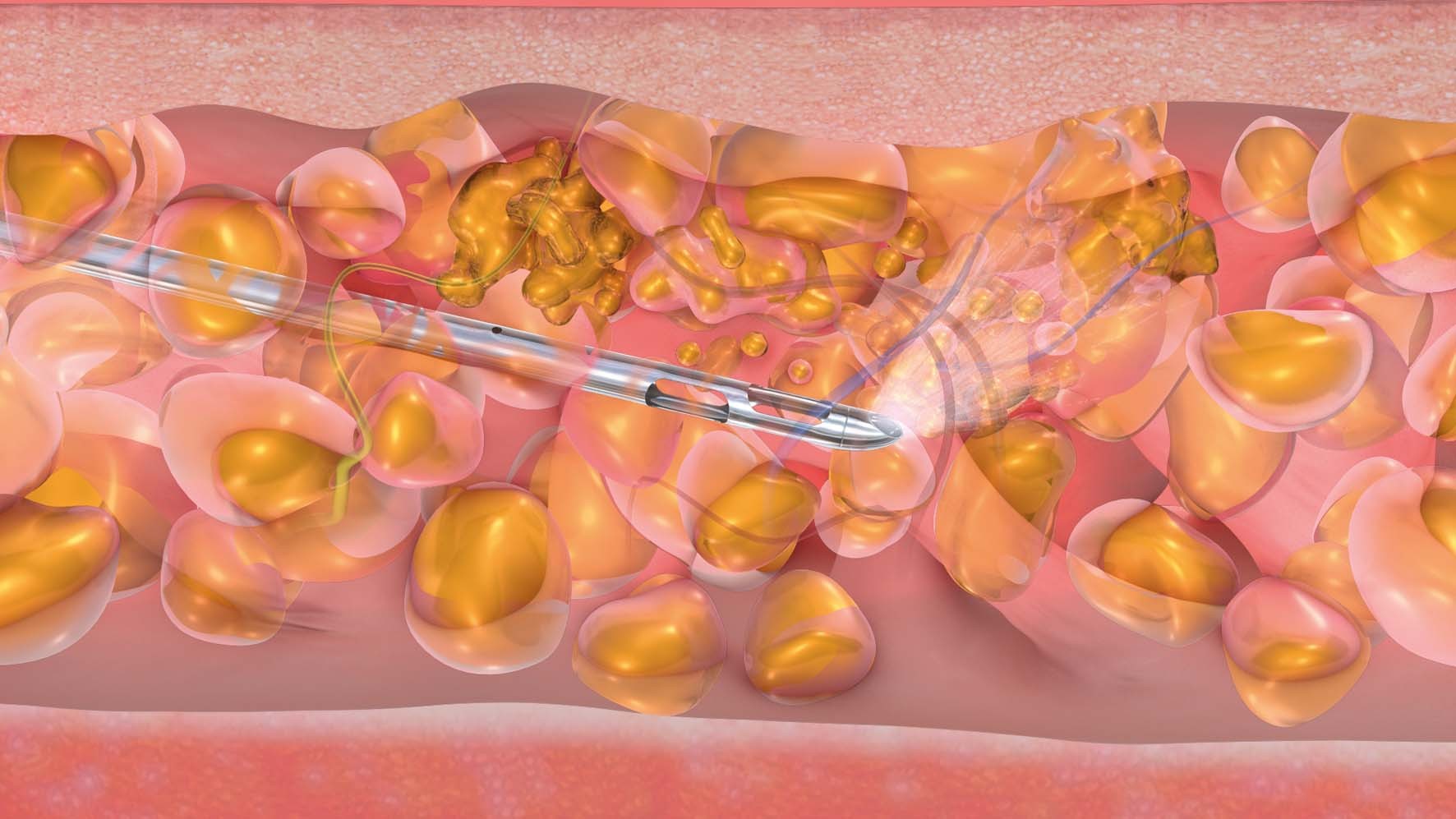

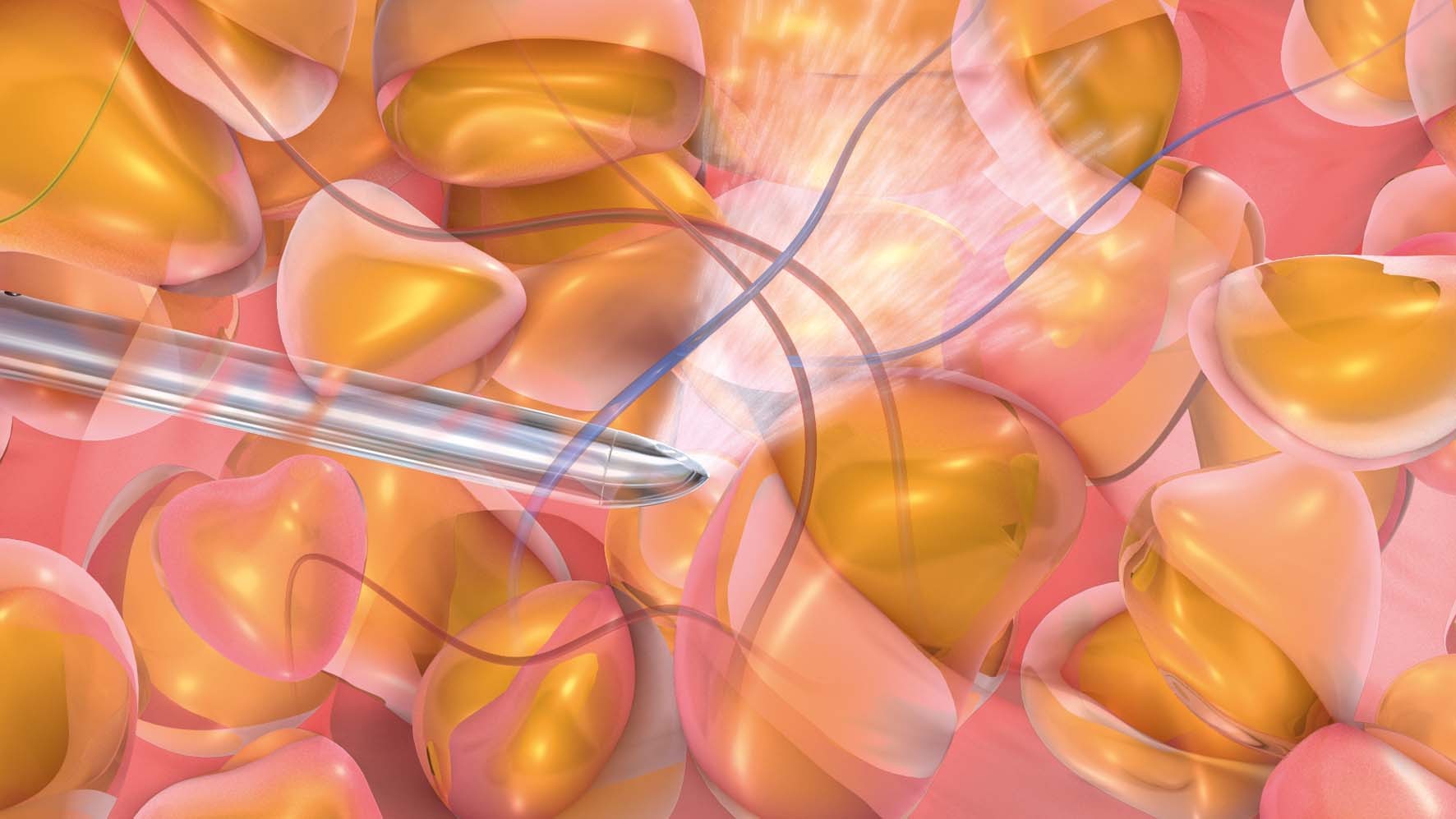

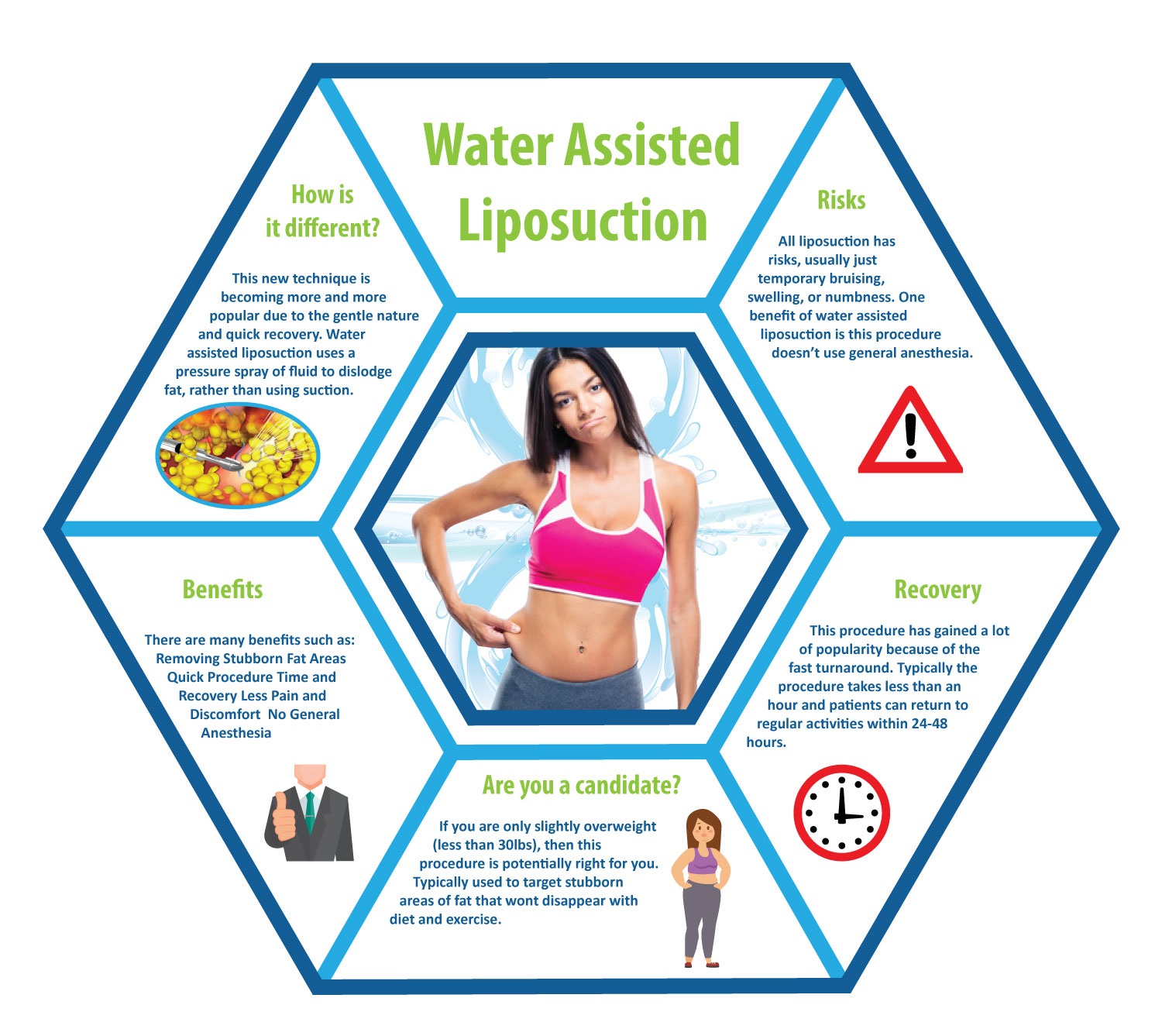

General Anesthesia
With general anesthesia, patients are completely unconscious, and except for in very rare instances, patients have no recollection or experience of discomfort during surgery. General anesthesia provides the most powerful pain control – you cannot feel pain if unconscious. It is fast-acting, and is usually effective within a minute or two. This can speed up operating time, and allow surgeons to complete more surgeries in a day.
The vast majority of surgeries using general anesthesia are complication-free. However, general anesthesia has a small but significant risk of mortality. The risk of serious complications has improved over the last 60 years, but even with the most modern techniques, approximately 4 in 100,000 relatively healthy patients will die from complications of general anesthesia. Individuals with significant medical problems or chronic medical illnesses have an even higher risk of death.
Some surgeons prefer general anesthesia and some patients have a strong preference for remaining unconscious during their procedures. Using general anesthesia provides convenience to both parties, but not without also adding risk to the surgery.
Find Out if Tumescent Technique or WAL Lipo Is Right for You
In recent years, awareness of lipedema has started to grow. This disease is often misunderstood or misdiagnosed, as many doctors and patients have yet to fully understand it. If you have the symptoms associated with lipedema, you should find a cosmetic surgeon who has vast experience and knowledge of treating the disorder with liposuction. Even though tumescent liposuction is a generally safe outpatient procedure, all surgery has some risk, so each individual needs to consult with a surgeon who has specialized knowledge of the lymphatic system to determine the best course of treatment.
NOTE: Lipidema also has alternate spellings, and may be known as lipoedema – in Canada and the UK – Lipodem – in Germany – or even Lipodema. Each spelling is correct, but one or two spellings are used predominantly in different countries.
In the past, liposuction was thought of as a major surgery only available to the privileged few. Additionally, recovery time for liposuction was exhaustively long, taking months upon months to heal and actually see the results of the surgery. Public opinion of liposuction has been improving in a positive way in recent years thanks to new advancements in the field of cosmetic surgery.
New and improved liposuction techniques have opened the door for many more patients to experience the body sculpting benefits of liposuction. One of the most important liposuction advancements, especially for patients suffering from lipedema, is the water assisted technique. Water assisted liposuction offers all the benefits of traditional liposuction but because it is more gentle and causes less injury to the connective tissue it offers unique advantages.
Can Lipedema be Treated?
Yes, Lipedema can definitely be treated to lower the symptoms and stop it from getting worse, and Lipedema fat can be removed.
Dtsch Arztebl Int. 2011 Jul; 108(27): 469–474.
Published online 2011 Jul 8. doi: 10.3238/arztebl.2011.0469
PMCID: PMC3147285
PMID: 21814522







